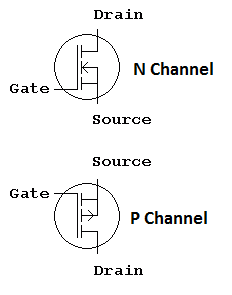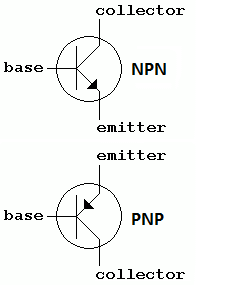| |
MOSFET
Metal Oxide Semiconductor Field Effect Transistor |
BIPOLAR
Bipolar Junction Transistor |
| Output Current |
is controlled by the input gate voltage. |
is controlled by the input base current. |
| Cost |
More Expensive |
Lower Cost |
| ESD Risk |
Easily damaged by ESD Electrostatic Discharge. |
ESD is rarely a problem |
| Gain |
Very high current gain which is nearly constant for varying drain currents. |
Lower current gain and it is not constant. It decreases when the collector current increases.
Gain increases as temperature increases. |
| Input Resistance |
Very high. More than 107 Ohms (usually a good thing)
For AC signals this figure can be much lower due to the capacitance of the device. |
Low (often a bad thing) |
| Input Current |
Picoamps (approximately zero). |
Microamps or Milliamps |
| Saturation |
VDS = 20 mV
Even lower heat dissipation when saturated (fully turned on).
|
VCE = 200 mV
Low heat dissipation when saturated (fully turned on). |
Switching Speed
and Frequency
Response |
Faster than Bipolar
Better frequency response
May result in unwanted (parasitic) supersonic (frequency too high to hear) oscillations that can destroy your speaker tweeters. |
Slower than MOSFETs. Inferior frequency response. |
| Voltages |
When fully turned on (saturated), the potential drop across the device is about 20 mV. (between the source and drain). |
When fully turned on (saturated), the potential drop across the device (Vce) is about 200 mV. (between the collector and emitter). |
| Bias (input) Voltages |
N Channel MOSFETS need +2 to +4 volts to turn them on. The gate current is approximately zero. |
Base current starts to flow with an input voltage of about +0.7V. Relatively large base currents are needed to make transistors operate. |
| Thermal Runaway |
When MOSFETS heat up, the current flowing through them decreases. They are less likely to be destroyed by overheating. |
When bipolar transistors heat up, the gain increases and so the current through them increases too. This in turn causes further heating and yet more gain and current. This can cause catastrophic failure called thermal runaway.
Negative feedback helps to prevent this. |


